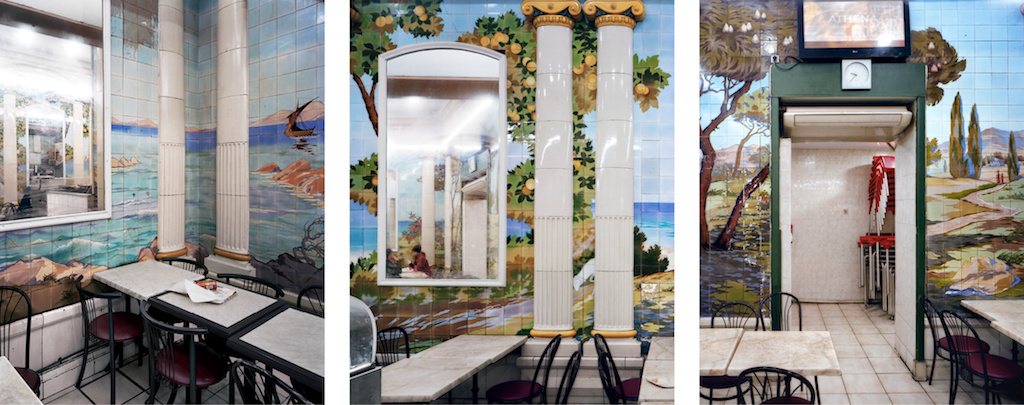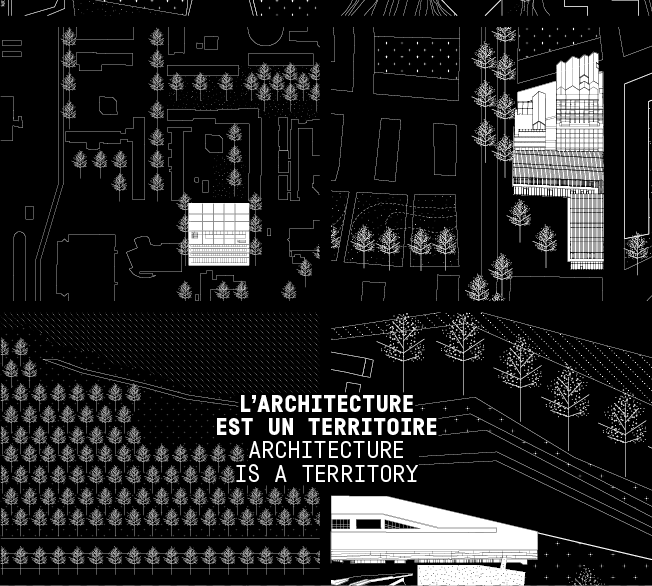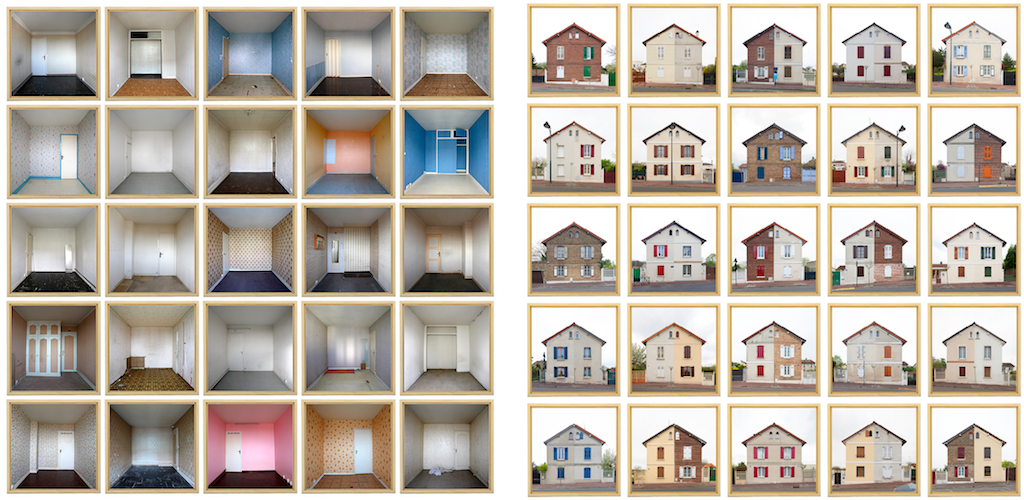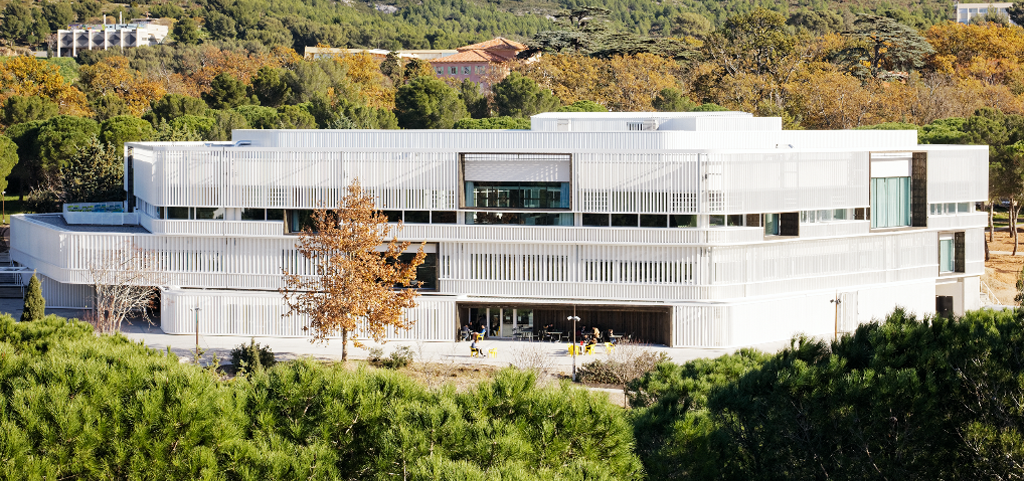The Dream Gallery of Remy Marciano 4/5
The recently published special issue ”The Architecture is a territory” of L’Architecture d’Aujourd’hui is dedicated to the work of the architect Remy Marciano. For this issue the architect was invited to imagine his “dream gallery” – a museum on paper where the works of five artists are exhibited. The fourth one of this collection is Marie Bovo, a French photographer showing us the Mediterranean in her unique way.
This article of Jean-Philippe Hugron is originally published in the new special issue of L'architecture d'Aujourd'hui, available on our online shop.
“This series was made in Marseille in a kebab shop. It illustrates the question of the territory and places it in action”, explains Marie Bovo. This French photographer is known for her striking work ranging from Russian landscapes through open doors on the Trans-Siberian to the courtyards and windows of working-class districts in Algiers.
Open from 7 am to 2 am, En Suisse – Le Palais du Roi was a Marseille kebab shop, on the corner of the Rue des Feuillants. Open forever, it seemed eternal. The walls of its sole indigent room were still covered with ceramic tiles and big mirrors dating from 1895; a splendid décor for a fast-food restaurant. The ceramics illustrated the encounter of Gyptis and Protis and the mythological foundation of Marseille. The shop’s proprietor, a
Franco-Egyptian settled in Marseille for many years, told me the place was once part of a bank.
The owner, the waiters and I came to an agreement allowing me to photograph the place one or two evenings per month to avoid interfering with the service. Starting work after 8 pm, I wanted to capture the place in the harsh light of the neon fixtures at the back of the room. Children, drug dealers, adolescents, loners and whole families came here to eat for a modest sum. The entire Mediterranean, all its voices, the travellers and the migrants and the Franco-Algerian staff were represented on the walls and present in the room. I framed my shots with the big mirrors in the image, fitting into each photograph the myth and its reflection in the other mirror, not its opposite but rather its depth in time. I discovered a few months later that the shop had been sold. Its new owner wished to make it into a “modern” kebab shop. Though the city of Marseille had listed these ceramics to protect them from destruction, as there was no surveillance of the project, the ceramics and mirrors disappeared beneath plasterboards glued directly onto the tiles.
Appalled by what was happening, I insisted on being allowed to photograph the worksite before the ceramics disappeared. The owner finally acquiesced and I took my pictures in darkness with only the project’s halogen lamps offering a bit of light in certain areas. The place was being transformed into a ruin. Its new name: Istanbul City.
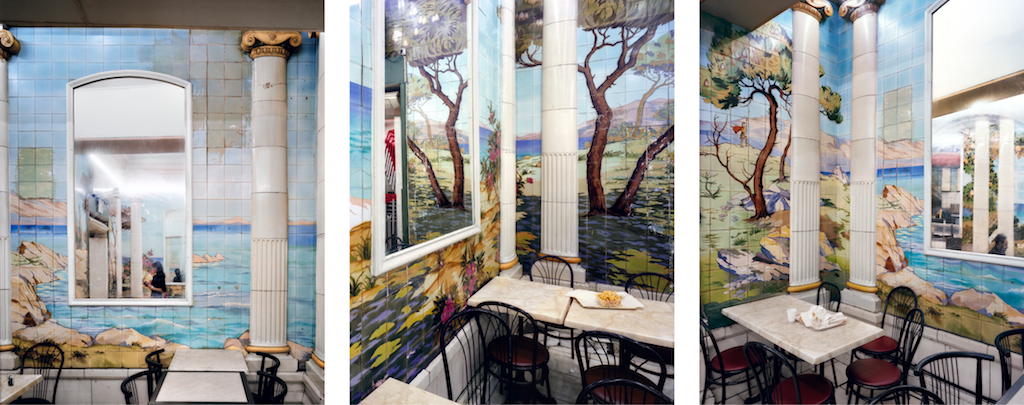
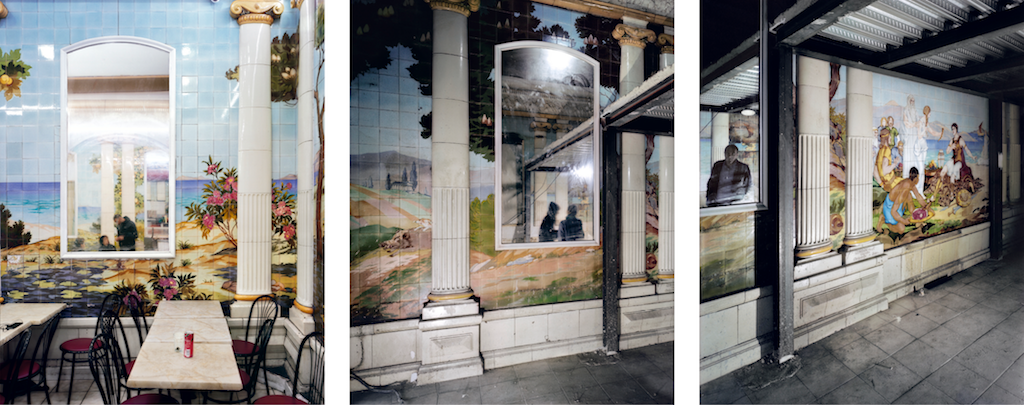
__________

